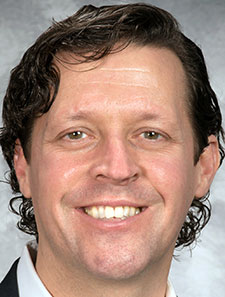 Medical schools teach a lot of material in a short time, and residencies and fellowships help round out the training that makes hospitalists good at what they do. But nowhere in that learning curve do doctors or others get training on how to secure private equity funding, how to manage start-up burn rates, or how to commercialize an idea for a medical device.
Medical schools teach a lot of material in a short time, and residencies and fellowships help round out the training that makes hospitalists good at what they do. But nowhere in that learning curve do doctors or others get training on how to secure private equity funding, how to manage start-up burn rates, or how to commercialize an idea for a medical device.

Dr. Barrett
That’s why Thomas Barrett, MD, MCR, FACP, SFHM, launched the Hospital Medicine Innovation and Entrepreneurship Special Interest Group (SIG) in February 2023. Dr. Barrett, a hospitalist in the VA Portland Healthcare System and an associate professor in the division of hospital medicine at Oregon Health and Science University in Portland, has spent the past four years working on SHM’s annual “Shark Tank”-style competition at Converge.
He’s also spun out two biotechnology companies—so he sees innovation from both sides of the equation.
“As many biotech companies go, the technology was not robust enough, so we couldn’t really make a product,” Dr. Barrett said. “It took me quite a few years to figure that out. We probably spent seven years trying to make a product after 10-plus years of doing research. But it was very educational. I had investors, etc. But I had to walk away because the technology didn’t work.”
Dr. Barrett, who teaches a course on biotech innovation and entrepreneurship, says that innovation is a natural outgrowth of patient care. Hospitalists and others all see the inner workings of the healthcare system and have ideas on how to improve processes, procedures, and protocols.
“We all have these ideas of how can we improve care or help our patients,” he said. “So, you have to commercialize that. You have to turn your idea into a product or service that gets to the patient at the bedside.”
In the world of entrepreneurship, “the valley of death” is the period of time before an idea—even the best one—makes enough money to be commercially viable.
“The thing about a lot of medicine is you have to go through the U.S. Federal Drug Administration (FDA), which makes it a very high burden,” Dr. Barrett said. “And for that reason, a lot of funders don’t like to fund anything that has to go through the FDA. It’s kind of a niche area. So, for medical products that go through the FDA, that’s years. You’re in the red, you’re losing money for years. You have to survive that valley of death to get to the point where you’re feasible, and you get real funding and make a product.”
While the SIG isn’t a plug-and-play solution for every idea, it’s a place to share pearls and pitfalls on how to give the best ideas the best chance at making it. First up, funding is just one piece of the puzzle.
“If you’re starting a company, if you’re a founder, you need to surround yourself with a team,” Dr. Barrett said. “My passion is helping people form teams, so if you have an interest as a hospitalist or anyone else, it’s very important to work with technology people and folks like that. You can’t succeed if you don’t understand how to take care of a patient. And the technology people don’t get that. And certainly, as a physician, we don’t have a lot of background in engineering or IT, so obviously we need them. The teams are the big thing.”
Perhaps one of the best lessons the SIG teaches is the necessity of falling on one’s face before figuring things out.
“In entrepreneurship, failure is absolutely needed, and you can’t succeed without it,” Dr. Barrett said. “In large organizations, especially, failure is an n of one and your career is over. Culturally, they are opposites. If you want to get into entrepreneurship, that’s a very important difference.”
Take the U.S. National Science Foundation’s Innovation Corps, or I-Corps, as it’s known in the industry. The program bills itself as “an immersive, entrepreneurial training program that facilitates the transformation of invention to impact”.
“It’s just a way to frame things like customer discovery, business model canvas, and mission model canvas,” Dr. Barrett said. “The whole idea there is that you get out of the building and talk to actual customers and all these different segments to understand if the market actually wants what you have.
“And that’s usually the biggest problem. There are tons of stories of people who spend five or 10 years in a lab working on this great idea. Then they finally get out and talk to people, and they find out, boy, no one wants what I’m working on. But then they hear a consistent theme, and they discover, they tell me they want this, and I can do this, so it’s important to understand the whole process.” n
Richard Quinn is a freelance writer in New Jersey.